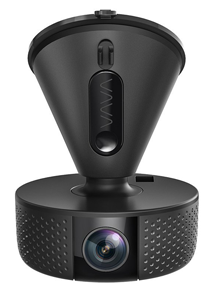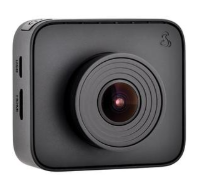
A friend of mine posted on Facebook that he was involved in a head-on collision with a drunk teenage driver that seriously injured him and his wife and killed a passenger in the teen’s car. In addition to his injuries, my friend was also dealing with the nagging question of what went wrong, even though the police had pretty much assured him it wasn’t his fault. Fortunately, he had a web camera in his car. After reviewing the footage, he was convinced that he wasn’t to blame. That provided him some psychological relief along with some solid evidence for the police.
A few weeks before reading his post, I was testing out a Vava Dash Cam in my own car but removed it because I didn’t feel that I needed it. After learning of my friend’s ordeal, I changed my mind.
In the interest of trying out another product, I installed a Drive HD Dash Camera from Cobra. Both are priced at just over $100 and do what any dash cam must do — record what’s taking place in front of the car and save those recordings long enough to review should the need arise. I checked on Amazon and found several other small dash cameras starting at under $50.

The Vava Dash Cam has more features than the Cobra model, but it’s also larger. Personally, I wasn’t interested in the Vava’s ability to swivel around and record what’s happening inside my vehicle, nor the ability to see what the camera sees in real time from my smart phone. The camera’s appeal to “share your road trips over social media” seemed kind of cool when I was installing it, but I actually never got around to using that feature. Another feature — a remote button that lets you take still snapshots of what’s out your window also seemed cool at first, yet, even though I did snap a few pictures, I never got around to viewing them.
I wasn’t interested in trying the camera’s ability to record “carpool karaoke singing moments.” What I really wanted was a small unit to sit there and simply record.

The Cobra HD Dash Cam 2208 is small enough to almost hide itself. I attached it to the inside of the windshield in front of my rear-view mirror. The mirror hides most of it, which means that it isn’t interfering with my view of the road. It’s one of those “set it and forget it” devices, though it does remind me when it’s on by chirping when I start the engine.
Unless I turn it off, its screen shows me what it’s recording, which I find slightly distracting so I try to remember to turn off that feature when I start my car.
Both cameras come with a removable cord that plugs into the car’s power port (formerly the cigarette lighter socket) with a MicroUSB plug. The Vava unit comes with a longer cord that allowed me to run it below the floor mats and to the backseat area where I have an extra plug. The Cobra’s plug is shorter, but longer cords are available online starting at about $5.00.
For a relatively clean installation, I routed the cord under headliner and weather stripping so it was pretty much out of the way. Both cameras come with little clips the help you attach the wires
These and many other dash cams record to MicroSD cards and keep recording till the card fills up and then records over old videos. The Cobra comes with an 8GB card, which is more than enough to capture an incident. If you want to use it to record road trips, you should probably buy a larger card.
The Cobra allows you to review the video on its own screen. The Vava sends the video to your smartphone, which you connect via WiFi. In both cases, you can remove the MicroSD card to view or copy the video to a computer.
The Cobra has a few other bells and whistles that I never use. It has both a collision warning and lane departure alerts, but both gave me false positives and are not as accurate as the sensors built into my relatively new car. The Vava has a built-in 320mAh battery that allows the camera to record footage when the car is parked, which — in theory — could detect a break-in if you remember to point the camera toward the door. I never remembered.
I hope I’ll never have to review the video, but I am glad it is collecting information. Of course, evidence could be a double-edge sword and used against you if it proves an accident is your fault and the other party or the police are aware that you have footage.
As we inch our way toward more sophisticated and, ultimately, self-driving vehicles, I’d like to see front-facing cameras built into cars and a mechanism so that the rear camera — that many cars already have — records what’s happening behind you, which would be important if you’re rear-ended.